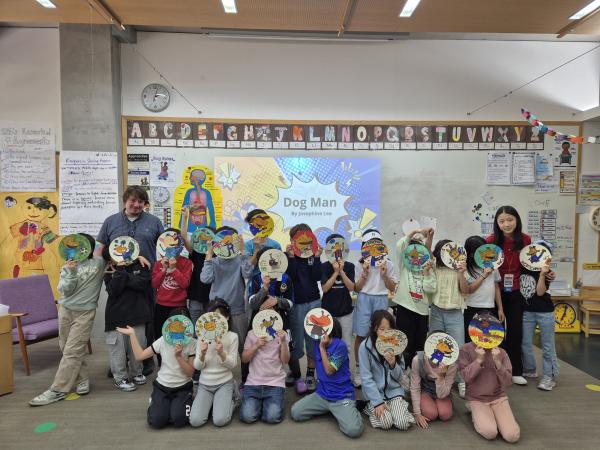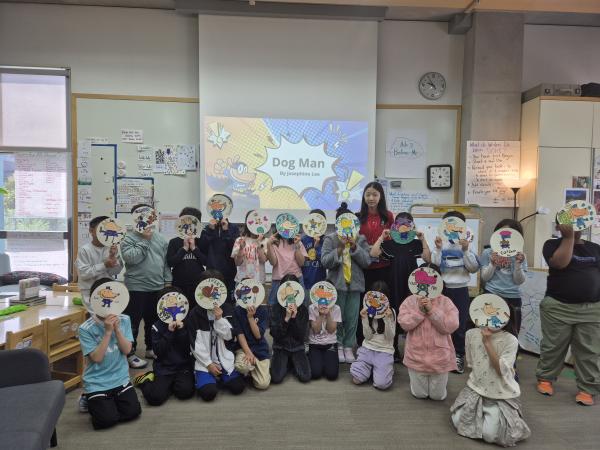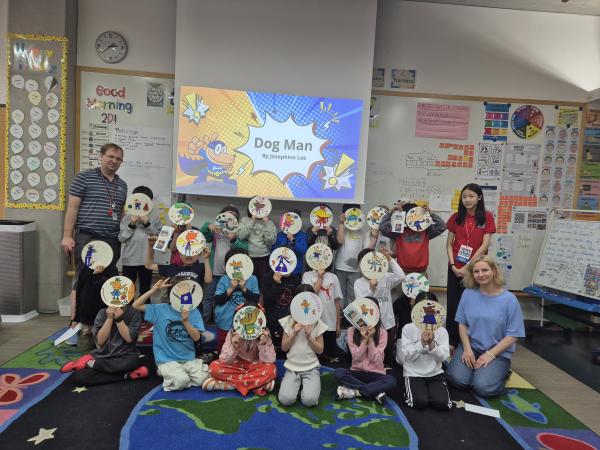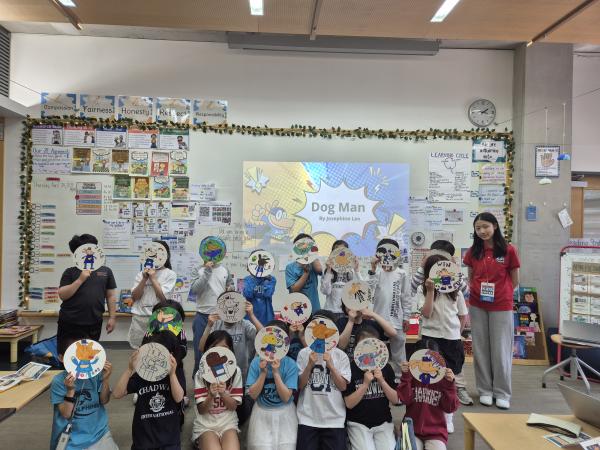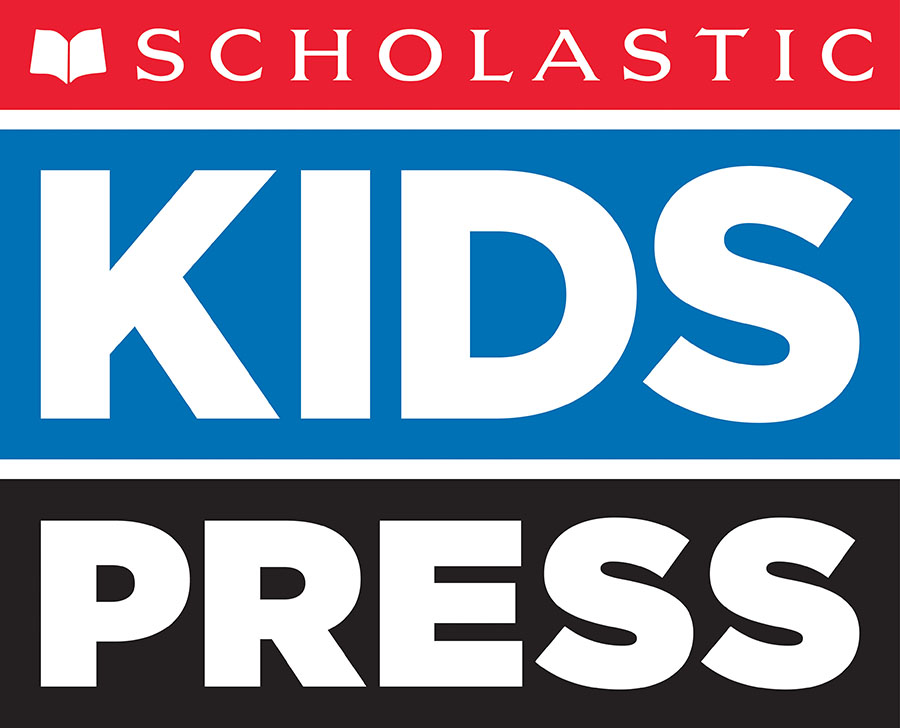KID REPORTERS’ NOTEBOOK
The “Dog Man” Project


Kid Reporter Josephine Lee pictured with Ms. Sewell. Elementary School Librarian at Chadwick International School
“Having a sense of fun in books is a huge, huge deal, because a lot of times kids-even me when I got to third or fourth grade-didn’t associate reading with fun,” said Dav Pilkey, an American author and illustrator of children’s books. He is best known for his children’s book series, Captain Underpants and Dog Man. More than 90 million copies of his Captain Underpants series and over 70 million copies of his Dog Man series are in print worldwide.
As a bookworm myself, I have read numerous graphic novels by Pilkey in my life, and I have enjoyed every single one of them. My personal favorite is the graphic novel series, Dog Man. I wondered… if Pilkey’s books are in high demand all over the world, what do students in South Korea, at Chadwick International School, think about Dog Man?
Dog Man Graphic Novels in Chadwick International School’s Library
I sat down with Ms. Vivien Sewell, Chadwick International School’s elementary school librarian, to dig deeper into this topic. The first question that came to mind was, “How much are students exposed to graphic novels like Dog Man in school?”
“We have many Dog Man books, but then they are never on the shelf because they are always checked out. They are so popular that they fly off the shelf,” said Sewell. Sewell emphasizes that the kids are so eager to read the Dog Man graphic novels, she was curious to read them herself.
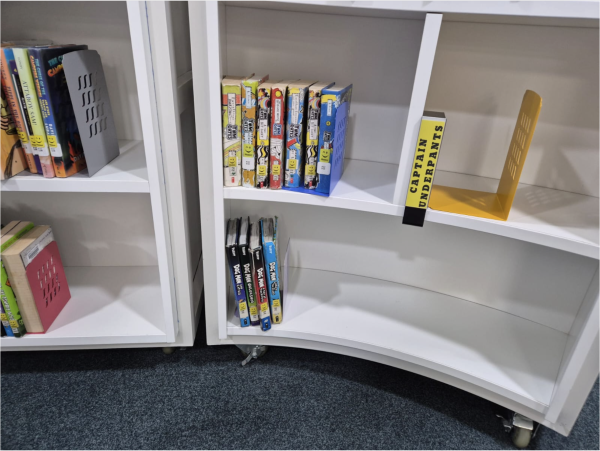
The Dog Man and Captain Underpants section are empty because students already borrowed them!
Dog Man’s Influence On Children
“[I believe that] reading Dog Man has a great and positive influence on children in terms of both the story and the moral,” said Sewell. Graphic novels like Dog Man can efficiently share messages that are essential for young children to learn. Sewell believes that Dog Man has so much appeal because “there are so many teachable topics that are conveyed in short, fun ways.”
Books like Dog Man also allow young children to build confidence as readers. Sewell said that as children read graphic novels like Dog Man again and again, they tend to earn more confidence to move on to more “substantial and advanced books.” Based on personal experience as a librarian, Sewell said, she tends to see students constantly re-reading the Dog Man graphic novels, and around 4th grade, students get the confidence to explore different books from different genres.
Answering questions from parents
Sewell says a seasonal question that comes up from parents and some teachers is, ‘Why is my kid picking graphic novels?’ She gently guides the parents by saying, “The number one thing we want them [children] to do is to read,” says Sewell.
If a particular graphic novel or book is what appeals and gets the attention of a child, according to Sewell, this is called being a dominant reader. “If Dog Man is that book, if a graphic novel is that book, then that’s great!” Sewell says that, especially for young students, it takes time to engage and enthuse them about reading more complex stories and chapter books. Sewell further said that more and more research is coming out that discusses the benefits of reading graphic novels.
Sewell says what would be more concerning would be when the student is only reading graphic novels. “They get stuck sometimes,” Sewell says. A variety of books and formats is essential to build their stamina, to build their vocabulary, and to build the way they visualize complex scenes from books.
In fact, I interviewed Pilkey and he responded to a similar question with encouragement to parents: “The comic medium itself is complex. It's a challenge to decipher contextual clues from the illustrations.” He described that sometimes comics can “appear deceptively simplistic,” however, there are “layers of stories” built into each one.
Pilkey went on to explain that every single panel in a comic ultimately becomes part of a larger story, a larger image, using different parts of the brain when simultaneously looking at the art as well as the text. “It's the best brain exercise!” said Pilkey.
He also encourages parents to let their children choose the books they want to read, and that the genre does not matter. Pilkey says that what sparks the kids’ interest is the most vital point after all. Pilkey points out that his parents let him choose books that piqued his interest. That was the turning point for him. “It was life-changing for me as I began to associate reading with fun. I felt independent and developed confidence in reading because I could pick my own books without any judgment from my parents,” said Pilkey.
Bringing Dog Man to 2nd-grade classrooms
I had the opportunity to bring the imaginary world of Dog Man to 2nd-grade classrooms. As I showed Dog Man images on my presentation slides, the young students immediately erupted into cheers. ‘Dog Man!!’ ‘I love Dog Man!!!’ ‘I watched the movie!’
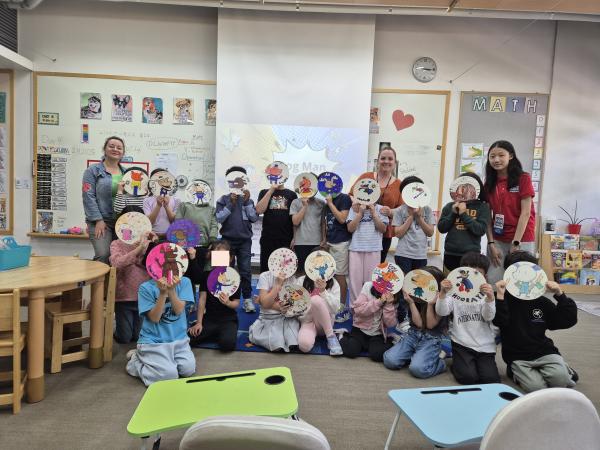
Kid Reporter Josephine Lee with a 2nd Grade Classroom at Chadwick International School
I talked about Pilkey’s story and his Captain Underpants and Dog Man series.
We also had a class activity of creating our own imaginary Dog Man character and drawing it on a circular canvas. This was to tell everybody that anybody can become a superhero, just like Dog Man. The students were tasked to draw their favorite things, hobbies, and quotes from the book onto the circular canvas.
During our art portion of the class, I walked around the class to interview some students. I asked the reasons why they like Dog Man and what their favorite thing from the book was. Most of them replied by saying that they like the story as well as the characters, such as Dog Man, Chief, Petey, and Lil’ Petey.
In one of Pilkey’s past interviews, I researched that Pilkey, too, had opportunities to meet 2nd and 3rd graders in workshops. According to him, children say they enjoy drawing and writing, but as they advance to 4th and 5th grade, they lose confidence and become less interested in writing and drawing. So I asked Pilkey if he thought students should take more risks and accept imperfection?
“In the Captain Underpants universe, the characters George and Harold start writing the Dog Man series in kindergarten,” said Pilkey. He highlights that both George and Harold did not worry about perfection; instead, they had fun sharing stories and art.
“As the Dog Man series continued to progress, George and Harold continued to progress,” said Pilkey. Pilkey wanted to convey George and Harold’s progress throughout the series by art styles, writing, and themes. Pilkey tried to show how they developed as they practiced writing and drawing. Pilkey further mentioned how George and Harold “naturally improved over time by practicing diligently and being persistent, and it all started with not being afraid to make mistakes.”
Like Dog Man, you are the author of your own story. You have the power and ability to become whoever you want to be. It just takes courage to struggle, wisdom to learn from mistakes, and determination to find solutions when life gets complicated.
You can be your own superhero.
Special Thanks
Special thanks to Ms. Sparkman, Mr. Pilkey, Mr. Jackson, Mr. Kearnan, Mr. Taylor, Mr. Dumelie, Ms. Sewell, Ms. Perry, Ms. Tonya, Ms. Gray, Mr. Brian, Ms. Carmen, Ms. Chloe, Mr. Armstrong, Ms. Anna, Ms. Chato, and Ms. Diana, and all Grade 2 Students.
For all the teachers, thank you so much for making this happen!
For all Grade 2 students, thank you for showing your passion as well as interest in Dog Man :)
Below are more photos from Josephine's adventure!
